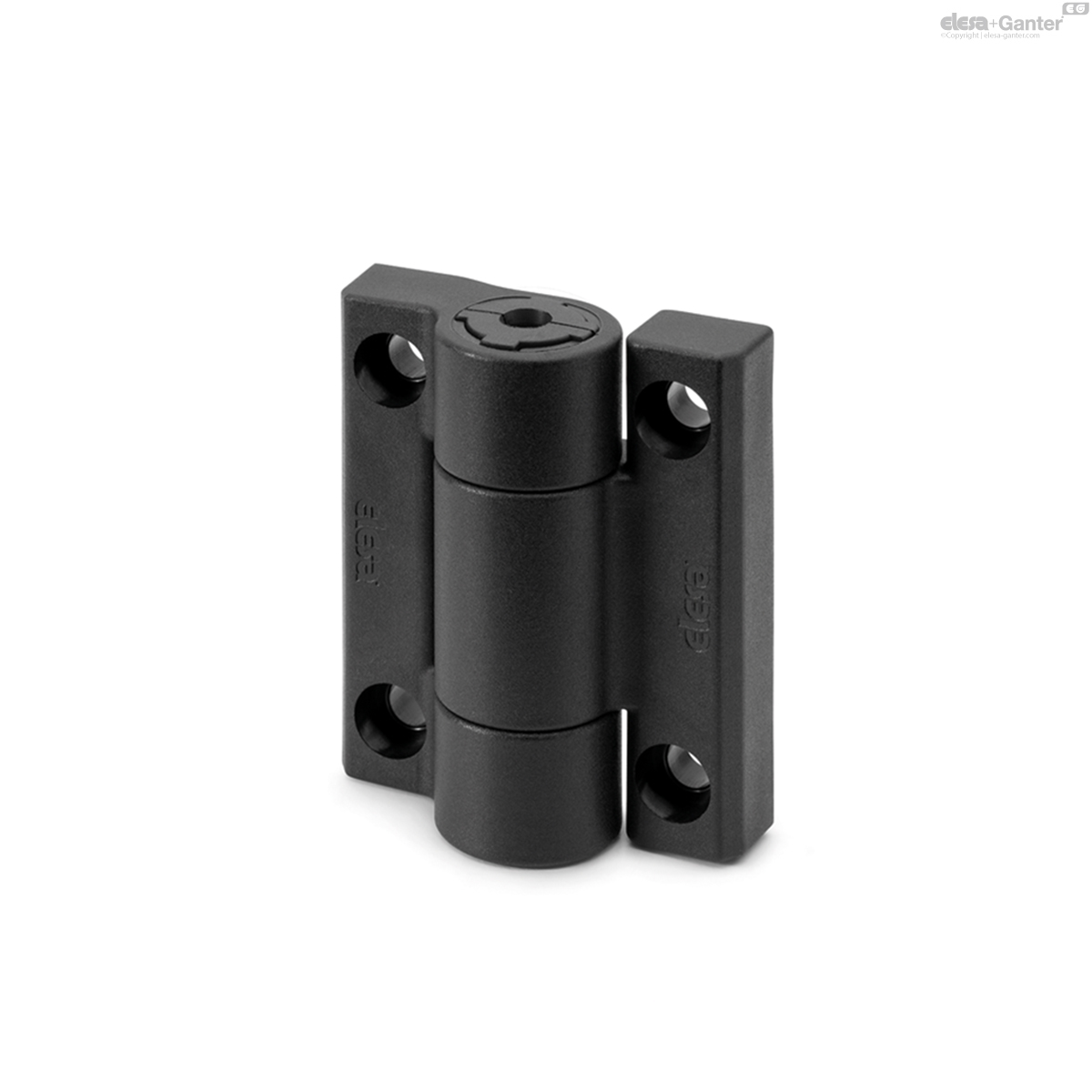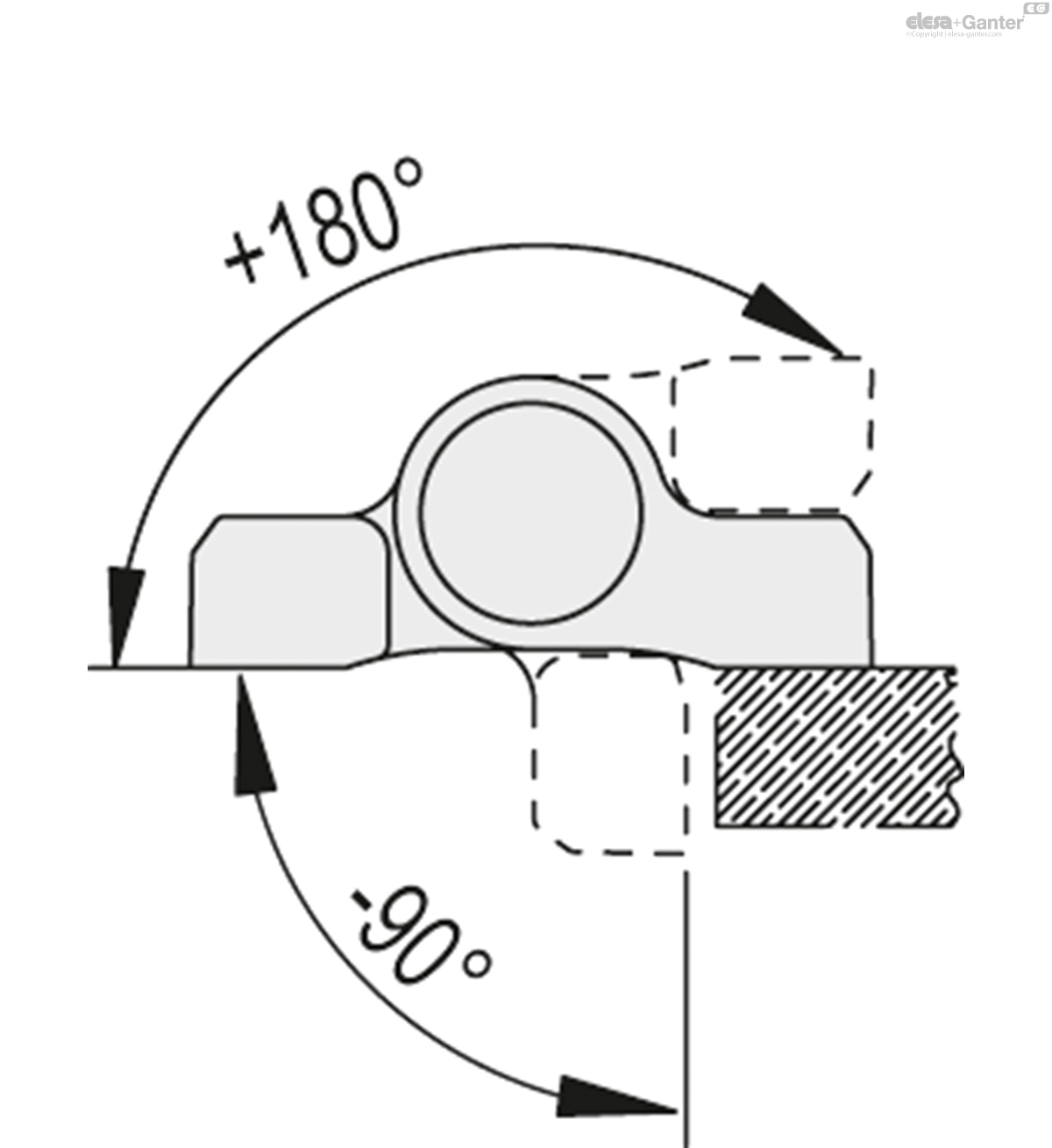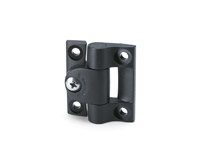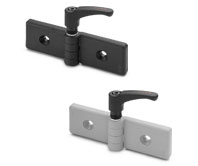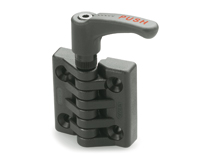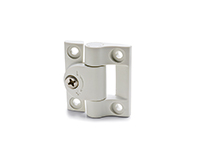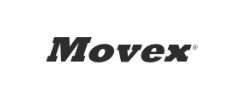CFU-RA
Hinge with adjustable frictionDescription
Material
Glass-fibre reinforced polyamide based (PA) technopolymer, black colour, matte finish.
Conical friction element
Glass-fibre reinforced polyamide based (PA) technopolymer, black colour, matte finish.
Expansion element
Glass-fibre reinforced polyamide based (PA) technopolymer with tribological fillers, black colour, matte finish.
Adjusting screw and nut
AISI 304 stainless steel screw
AISI 316 stainless steel nut
Standard execution
Pass-through holes for M6 cylindrical head screws, hexagon socket.
Rotation angle (approximate value)
Max 270° (-90° and +180° being 0° the condition where the two interconnected surfaces are on the same plane).
Do not exceed the rotation limit angle so as not to prejudice the correct operation of the return spring.
Features and applications
The main feature of the CFU-RA hinge is the option to vary the resistant torque of the door when opening and closing.
It can therefore also be used to lock the door in a fixed position from time to time.
The adjustment system (ELESA patent) is activated by exerting force on a special screw located in the axis of the hinge, which allows the resistant torque of the hinge to be increased or decreased in a controlled manner in both directions.
The special geometries of these conical surfaces and the tribological characteristics of the different materials used, obtained with the use of special additives, have made it possible to optimise the maintenance of the resistant torque over time.
Resistant torque
The maximum torque for locking the door in a certain position is around 5 Nm (approximate value, obtained by applying a torque of around 3 Nm to the adjustment screw). In applications where the door must be able to be moved, the maximum locking torque will be lower.
Over time, and also as a consequence of the environmental conditions, it may be necessary to use the adjustment screw to recover and maintain the desired resistant torque.
To choose the convenient type and the right number of hinges for your application, see the Guidelines.

| Resistance tests | Axial Stress | Radial Stress | 90° Angled Stress | |||
| Description | Maximum working load\rEa [N] | Load at breakage\rRa [N] | Maximum working load\rEr [N] | Load at breakage\rRr [N] | Maximum working load\rE90 [N] | Load at breakage\rR90 [N] |
| CFU-RA.67 | 900 | 3000 | 700 | 4500 | 800 | 3600 |
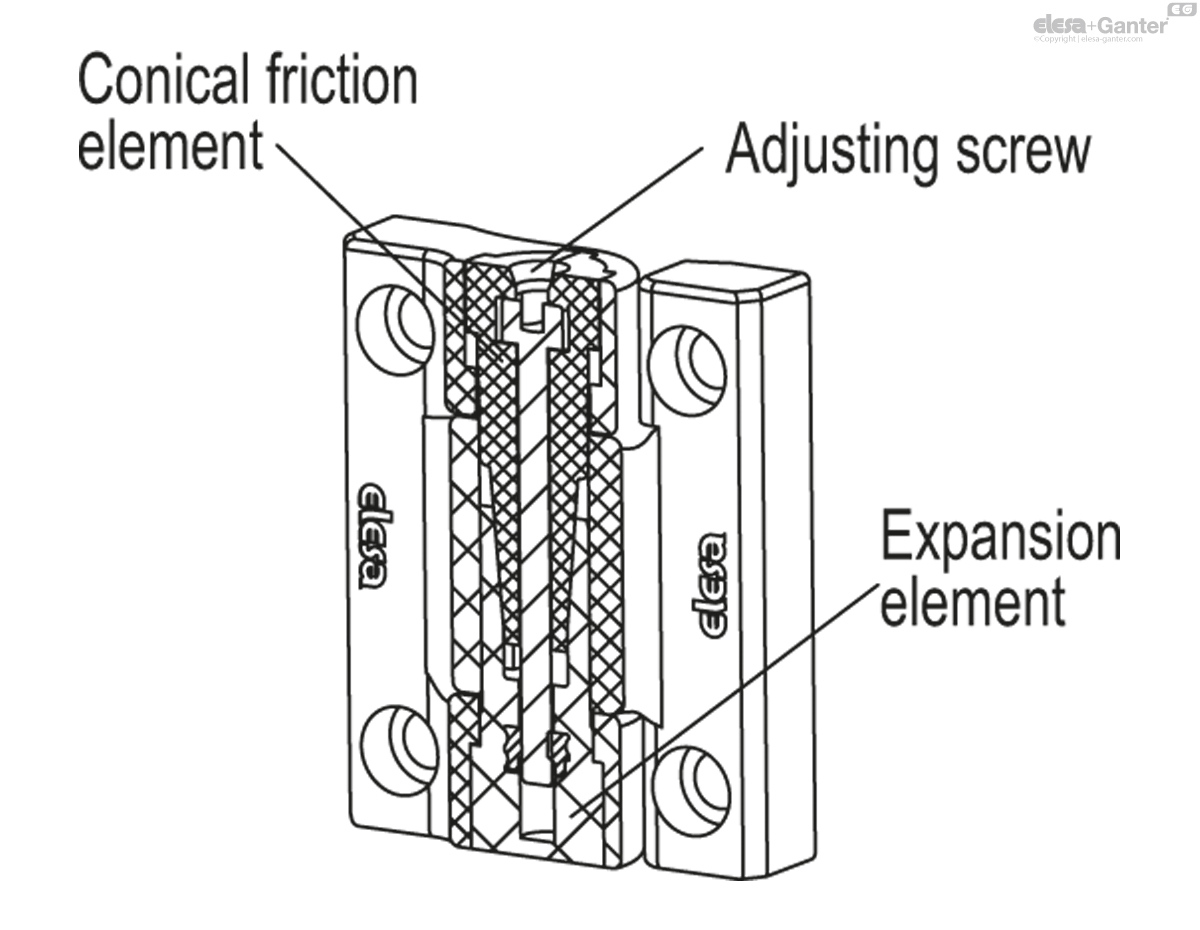
CFU-RA
| L | B | d1 | d2 | f | f1 | H | h1 | h3 | b1 | C# [Nm] |
||||
|---|---|---|---|---|---|---|---|---|---|---|---|---|---|---|
| Code | Description | Actions | ||||||||||||
| 427542 | CFU-RA.67 CH-6 | 67 | 55 | 6.5 | 10 | 48 | 38 | 24 | 12.5 | 6.3 | 12.5 | 5 | 68 |
|

Enquiry Now
To allow us to respond to your enquiry promptly, please provide all required information.


